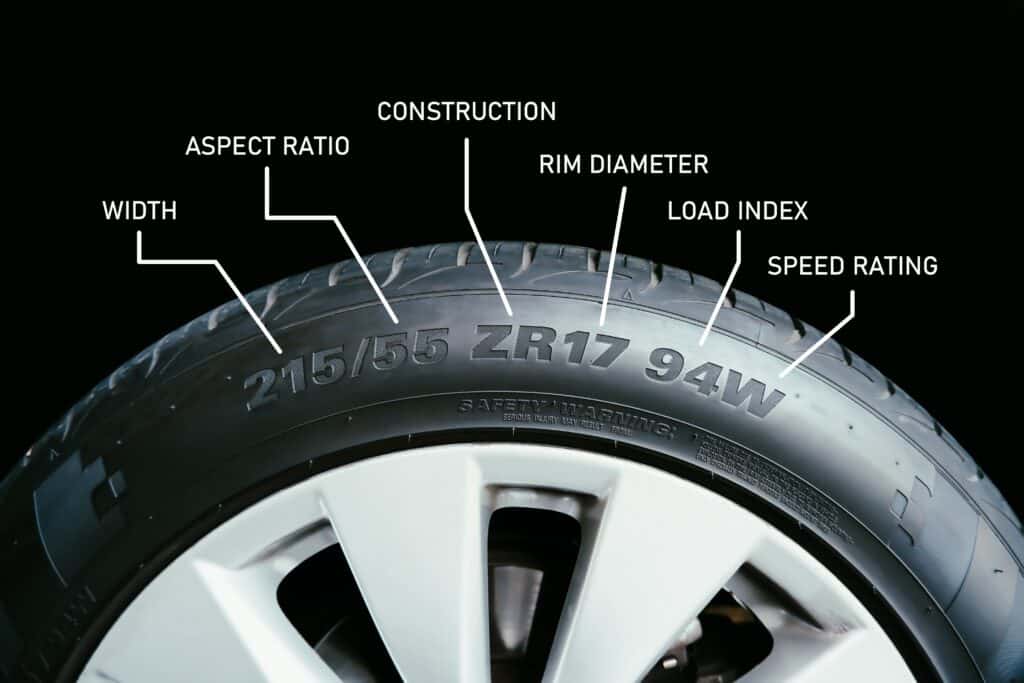A Comprehensive Tyre Speed Rating Guide
Road safety is always at the forefront of every driver. Whether you’re a daily commuter to work, just using your car for a school run or are a delivery driver, who needs to ensure that their vehicle is completely functional, tyres are a core element of the safety checks you should carry out on your car. Although you may have not considered tyre speed ratings to be a safety factor, the below guide will tell you everything you need to know about tyre speed ratings, where to find them, any myths, and also their importance.
What is a Tyre Speed Rating?
This rating is a code which indicates the maximum speed a tyre can be safely driven at. This is a legally approved limit which is determined by a range of laboratory tests which measure a tyre’s ability to dissipate eat, maintain structural integrity and handle the pressure of high-speed driving. A speed rated tyre is one that has been coded to safely guide the car owner.
You will find this speed rating code in the form of a letter, after the load index number. This number indicates the maximum amount of weight. Find our tyre speed rating chart below.
How to Find the Tyre Speed Rating?

The speed rating on each tyre can be found on the tyre wall, where the final letter represents this code. When determining tyre safety, as well as the visual health of your tyre, ensure that the load rating and the speed rating are also considered. If not, your tyre can be at risk of cracking, bursting and underperforming in selected conditions.
Why is tyre speed rating important to know?
It’s important to know the speed rating of your tyres as the faster your car is going, the faster the wheel turns which generates more heat. For the safety of you and other road users, it’s very important to choose a set of tyres that can cope with the pressure you’re putting them though.
It’s also important to note that just because the speed rating of the tyre is high, it doesn’t mean it’s the right tyre for your car which is why it’s important to discuss the options with a tyre garage near you.
Tyre Speed Ratings Chart
Have a look and determine what your tyre speed rating means. The below Speed Rating Chart shows the maximum speed in MPG and KM/H for each rating. It’s important to know that the UK and EU have different speed rating structure to the US, ensure you are taking note from the correct tyre ratings.
| Speed Rating | MPH | KM/H |
| A1 | 3 | 5 |
| A2 | 6 | 10 |
| A3 | 9 | 15 |
| A4 | 12 | 20 |
| A5 | 16 | 25 |
| A6 | 19 | 30 |
| A7 | 22 | 35 |
| A8 | 25 | 40 |
| B | 31 | 50 |
| C | 37 | 60 |
| D | 40 | 65 |
| E | 43 | 70 |
| F | 50 | 80 |
| G | 56 | 90 |
| J | 62 | 100 |
| K | 68 | 110 |
| L | 75 | 120 |
| M | 81 | 130 |
| N | 87 | 140 |
| P | 93 | 150 |
| Q | 100 | 160 |
| R | `06 | 170 |
| S | 112 | 180 |
| T | 118 | 190 |
| U | 124 | 200 |
| H | 130 | 210 |
| V | 149 | 240 |
| W | 168 | 270 |
| Y | 186 | 300 |
| (Y) | 186+ | 300+ |
How to check a tyre’s expiry date?
Tyres don’t expire, but they do have a recommended length of use that has been set by a manufacturer. If you want to check this, look for the Tyre Manufacturing Date, on the sidewall of the tyre. The format will be in weeks and year, the first two digits will be the calendar week and the second two are the year.
Can I put higher speed rating tyres on my car?
Avoid using tyres with a lower speed rating, as they may not handle higher speeds adequately and pose risks on UK roads. If you are considering fitting tyres with a higher speed rating to your car in the UK, think safety first and follow the manufacturer’s recommendations.
Consider the cost factor – tyres with higher speed ratings are typically more expensive. When selecting tyres for your vehicle, choose those with a speed rating that aligns with your driving requirements and complies with UK road regulations.
Avoid mixing tyres with different speed ratings on the same axle. It can lead to an unbalanced axle, causing vibrations, uneven tyre wear, and potential safety issues, particularly at higher speeds. Additionally, mixing different speed-rated tyres on the same axle could lead to legal complications during vehicle inspections or MOTs in the UK.
Tyre manufacture plays a large role. Higher speed-rated tyres are engineered to manage faster speeds and handle cornering. This type of tyre may feature ‘stickier’ rubber compounds and thinner sidewalls. However, these features could impact handling and safety, especially during high-speed driving.
Tyre brands rate tyres according to their selected criteria, aligning with the vehicle’s design, performance and characteristics. These criteria will not be the same across different brands and countries. Different tyre manufacturers may have differing design approaches, but the variations are often subtle and found in aspects like tread gauges, belt packages, and cap plies.

